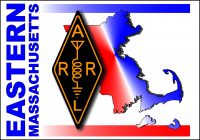Contents
Contact
Bill Ricker, N1VUX
226 Westville St
Dorchester, MA 02122
n1vux@arrl.net
Introduction
“Field Day is an annual Amateur Radio exercise, widely sponsored by IARU regions and member organizations, encouraging emergency communications preparedness among amateur radio operators. In the United States, it is typically the largest single emergency preparedness exercise in the country, with over 30,000 operators participating each year. Field Day is always the fourth full weekend of June, beginning at 1800 UTC Saturday and running through 2059 UTC Sunday.
“Since the first ARRL Field Day in 1933, radio amateurs throughout North America have practiced the rapid deployment of radio communications equipment in environments ranging from operations under tents in remote areas to operations inside Emergency Operations Centers (EOCs). Operations using emergency and alternative power sources are highly encouraged, since electricity and other public infrastructures are often among the first to fail during a natural disaster or severe weather.” [https://en.wikipedia.org/wiki/Field_Day_(amateur_radio)]
“It is a time where many aspects of Amateur Radio come together to highlight our many roles. While some will treat it as a contest, other groups use the opportunity to practice their emergency response capabilities. It is an excellent opportunity to demonstrate Amateur Radio to the organizations that Amateur Radio might serve in an emergency, as well as the general public. For many clubs, ARRL Field Day is one of the highlights of their annual calendar. The contest part is simply to contact as many other stations as possible and to learn to operate our radio gear in abnormal situations and less than optimal conditions. Amateurs use these same skills when they help with events such as marathons and bike-a-thons; fund-raisers such as walka-thons; celebrations such as parades; and exhibits at fairs, malls and museums — these are all large, preplanned, non-emergency activities. But despite the development of very complex, modern communications systems — or maybe because they ARE so complex — ham radio has been called into action again and again to provide communications in crises when it really matters. Amateur Radio people (also called “hams”) are well known for our communications support in real disaster and post-disaster situations.” [ARRL]
Field Day in Eastern MA
 The Eastern Massachusetts Field Day Directory contains some of the most comprehensive Field Day resource pages of its kind, offering “detailed historical and current information on individual field day club operations along with the complete event operating rules and helpful safety tips.” The Directory’s software will automatically compute your field day site’s Maidenhead Grid locator for VHF recommended ‘Grid Chase’ extra exchange. According to Bill Ricker, N1VUX, “We report third level, six-character grid; for example, LL99ii–which is useful for some microwave aiming tools–but you only need four (LL99) in the on-air exchange.”
The Eastern Massachusetts Field Day Directory contains some of the most comprehensive Field Day resource pages of its kind, offering “detailed historical and current information on individual field day club operations along with the complete event operating rules and helpful safety tips.” The Directory’s software will automatically compute your field day site’s Maidenhead Grid locator for VHF recommended ‘Grid Chase’ extra exchange. According to Bill Ricker, N1VUX, “We report third level, six-character grid; for example, LL99ii–which is useful for some microwave aiming tools–but you only need four (LL99) in the on-air exchange.”
“Clubs which are reactivating a previous Class A or F site can confirm to the EMA Directory by simply putting their pin in at the ARRL Field Day Locator – also conveniently linked from our directory. I’ll pick that up and mark them confirmed. I would appreciate an email from new clubs in Class A or F, clubs with new sites, clubs whose details on their EMA directory need updating, or who are definitely not using the site they had last year.”
The Directory also links to updated information on how to handle NTS radiogram traffic, and score bonus points during the event.
“A major goal always has been helping (and encouraging) EMA ARRL staff and leadership to plan visits to nearby field day sites, as is our custom — and helping us hit as many different ones as possible. From the staffs’ comments last year about how many sites they didn’t find, I’d like to suggest that if your big banner isn’t visible from the road, place some Realtors(tm)-style foamcore and wire signs at the entrance and leading visitors through the maze.” Bill adds, “‘Public Welcome’ and an arrow are recommended. If you’re not conducting a 24-hour operation, a statement of hours would be good on both the sign and on the EMA FD Directory and Headquarters Locator.”
N1VUX also invites you to post your comments and memories from field day on the ARRL Soapbox. “We’ll link them in the Directory for history. If your club has memories on a website or Facebook page that we don’t have linked, send me the link and I’ll make sure it’s included.”






